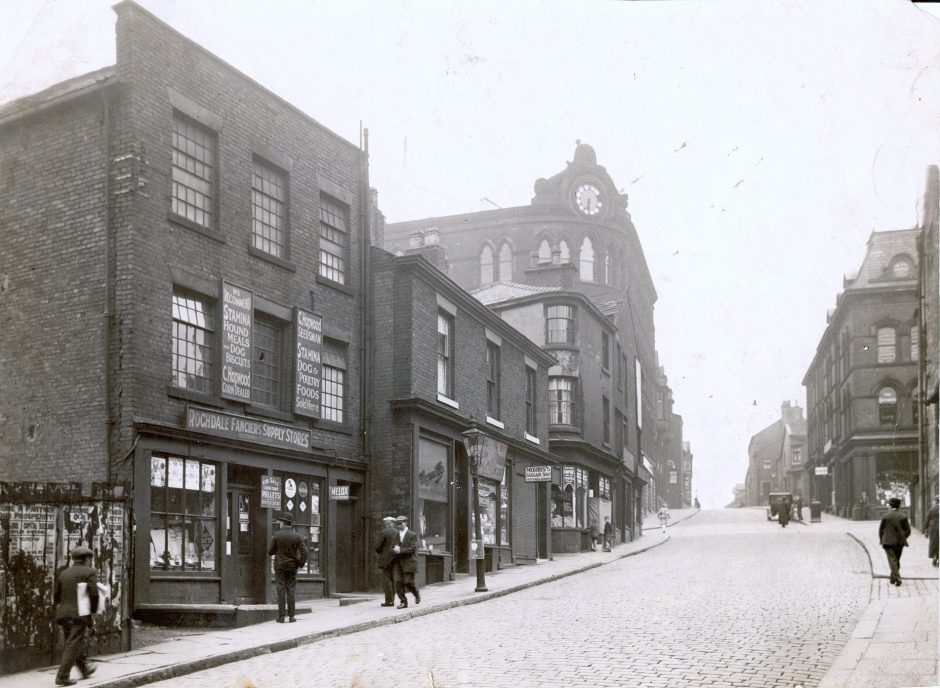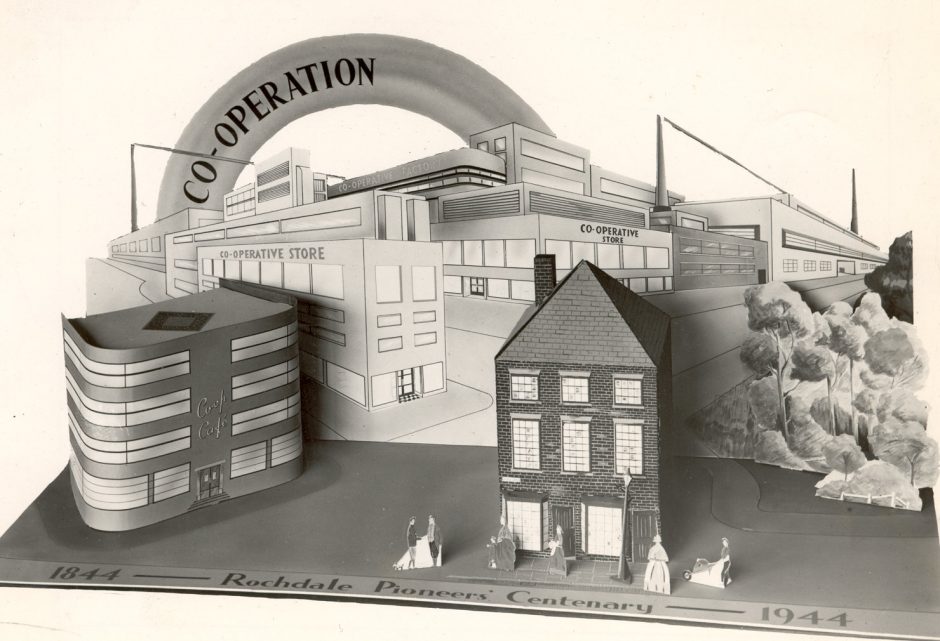This year, Co-op News turns 150. As part of our series looking at our life and times, Liz McIvor, museum manager, looks back at the first 90 years of the Rochdale Pioneers Museum.
Number 31 Toad Lane is famous around the world for being the first premises of the Rochdale Equitable Pioneers Society, and became a museum in 1931. During the Industrial Revolution, the building had been a woollen warehouse on ‘The Old Lane’ (in the local dialect T’owd Lane) and was re-used by several tenants before the Pioneers opened their doors in the winter of 1844.
The group of working-class men only leased part of the building and eventually outgrew it altogether, opening a new Central Premises (now demolished) in 1867, 100 yards up the street. The new building was on a very different scale, costing £10,000 and on four floors, with shops, offices, education spaces, library and board room– and topped with a hall that could hold events for 1,500 people.

In those early days, visitors came from other towns and countries to try to understand how the Pioneers had succeeded and to learn from them by using their values and principles as a standard by which to start their own ‘co-ops’. The first page of the visitor’s book started by the Pioneers in 1862 bears the names of pilgrims from Europe as well as the UK ,and went on to list visitors from all over the world coming to learn about the movement that began there.
The lease on 31 Toad Lane was allowed to lapse and it returned to private trade – for many years it was a pet shop. But visiting co-operators did not stop wanting to visit the old store, and in the early 20th century, the movement began to consider the importance of preserving the story, using the store as a place to cement co-operative identity. Visiting co-operators wanted to see the store as part of their trip, and the movement put together a fund to purchase number 31.
The Co-operative Union eventually bought the building in 1925, and after business leases ran out, the CWS Architects Department worked on designing the museum space. It took a great deal of work to prepare the building as a visitor’s centre but the humble space would become a source of inspiration because it symbolised what was possible even in dire circumstances: it was opened in 1931, a time of great global economic uncertainty and mass unemployment, as a beacon of hope for the future.

For many years, visitors to the Museum would go to the Central Premises up the hill, borrow the key and show themselves around or be shown around by a member of the Central Premises staff. Over the years it was staffed on request by the Rochdale Society and Co-operative Union, relying heavily on volunteer support in the later 20th Century. But work to preserve the connections to the past did not stop.
Closure for major structural works was required in the 1970s, which was paid for by international subscriptions – but by the millennium, a different direction was needed. The role of co-operatives in UK society had changed and generations of people were growing up without an understanding of the identity of the global movement. It was clear that the museum could no longer simply be a shrine.
A second reopening in 1981 was an opportunity to tell the story in a more public way, with what was left of the original Toad Lane becoming a protected Conservation Area for Rochdale Borough Council. The future of the museum would now be to work with visitors and local people to embed the history of the movement into the uniqueness of meaningful Co-operative Identity. The Co-operative Heritage Trust (CHT) was formed in 2007 by three major founders (Co-operatives UK, the Co-operative College and the Co-op Group), bringing together the museum and the National Co-operative Archive under one charity. Its role is now not just to care for the needs of the building, but to protect and collect records and objects which could engage and inspire new audiences. This includes every issue of Co-operative News since the first edition was published on 2 September 1871.
Plans were made for the continued preservation of the museum to provide safe access and facilities for more people to use the building and collections – the ROCHDALE project in 2012 was supported by the movement and the UK Heritage Fund to install a lift, toilets, display equipment and learning space – but the work is not over. Keeping these heritage assets open and accessible for everyone is an ongoing commitment for the CHT and the ongoing support of the movement is vital for us to continue to use the building in a way the Pioneers would have wanted, to spread and share the values and principles which are at the root of positive co-operative action.